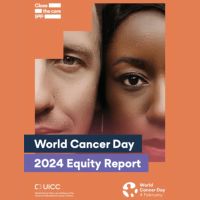The International Agency for Research on Cancer (IARC) as well as the U.S. Congress marks January as Cervical Cancer Awareness Month. The U.K also recognizes 17-23 January 2022 as Cervical Cancer Prevention Week.
Over 14,000 U.S. women are diagnosed each year. Globally, it was estimated in 2018 that cervical cancer caused 311,000 deaths making it the 4th most common cancer among women and 9th leading cause of cancer death. Fortunately, human papillomavirus (HPV) vaccination and appropriate screening make the disease preventable.
Gardasil, Gardasil 9, and Cervarix are HPV vaccines used worldwide to prevent cervical cancer with Gardasil 9 preventing infections from the nine HPV types that account for most cervical cancer. HPV vaccines first became available in the U.S. in 2006 with Gardasil that protected against four types of HPV. Although recommended age of age of vaccination are 11-12 years, the vaccines can be administered as early as at nine years of age or between ages 13-26. Later inoculation is possible but is unlikely to be beneficial because the likelihood of prior HPV exposure has increased.

The Papanicolaou test (Pap smear) invented independently in the 1920s by Georgios Papanikolaou and Aurel Babeș is a widely used screen for detecting abnormal cells. Although screening criteria vary by country, screening start at age 20 for every 3 to 5 years and continues until age 65. Used regularly with appropriate follow-up, it is estimated to reduce cervical cancer deaths by up to 80%.
To eliminate cervical cancer, WHO recommends reducing the incidence rate to less than four per 100,000 women by meeting the following targets by 2030:
- Vaccination: 90% of girls should be fully HPV-vaccinated by the age 15.
- Screening: Screening using a high-performance test should be performed on 70% of women by the age of 35, and again by the age of 45.
- Treatment: 90% of women with pre-cancer should be treated. 90% of women with invasive cancer should have it managed.
In doing so, WHO estimates that median cervical cancer incidence rate will fall by 42% by 2045, and by 97% by 2120. In turn this will prevent 300,000 deaths by 2030, over 14 million deaths by 2070, and over 62 million deaths by 2120.
For more Women's Health news Click here
Sources: WHO, NFID, European Guidelines for Quality Assurance in Cervical Cancer Screening



























